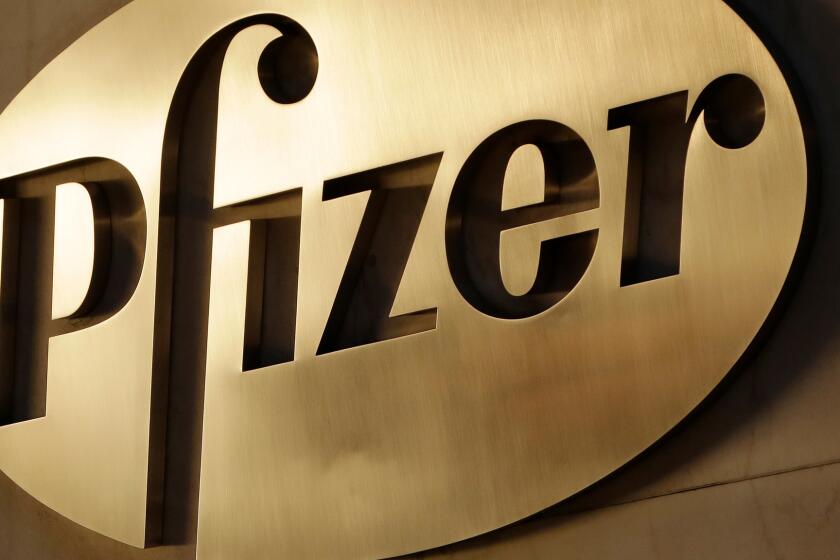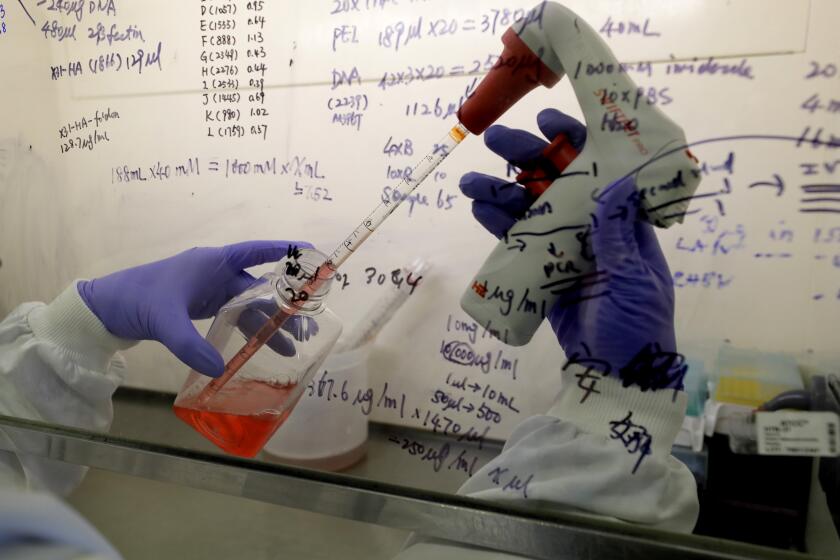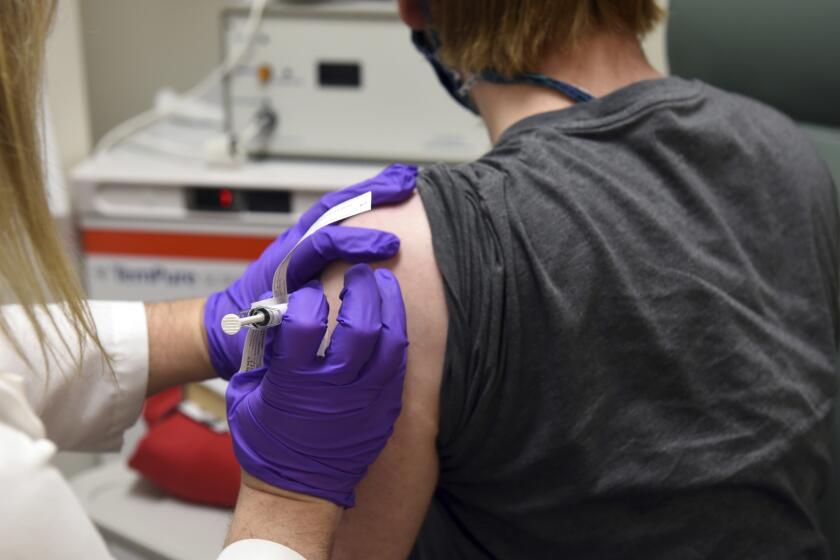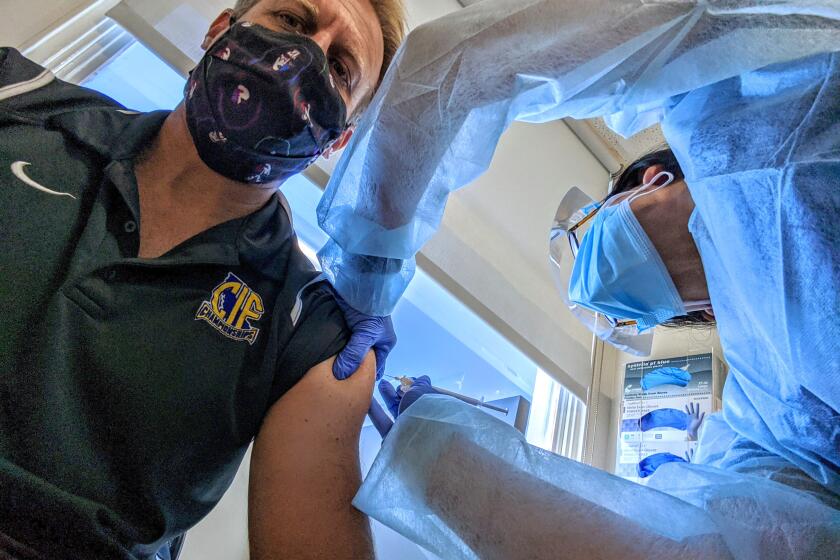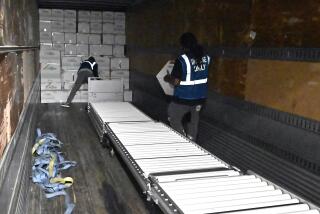As COVID-19 vaccine nears, states ramp up for biggest vaccination effort in U.S. history
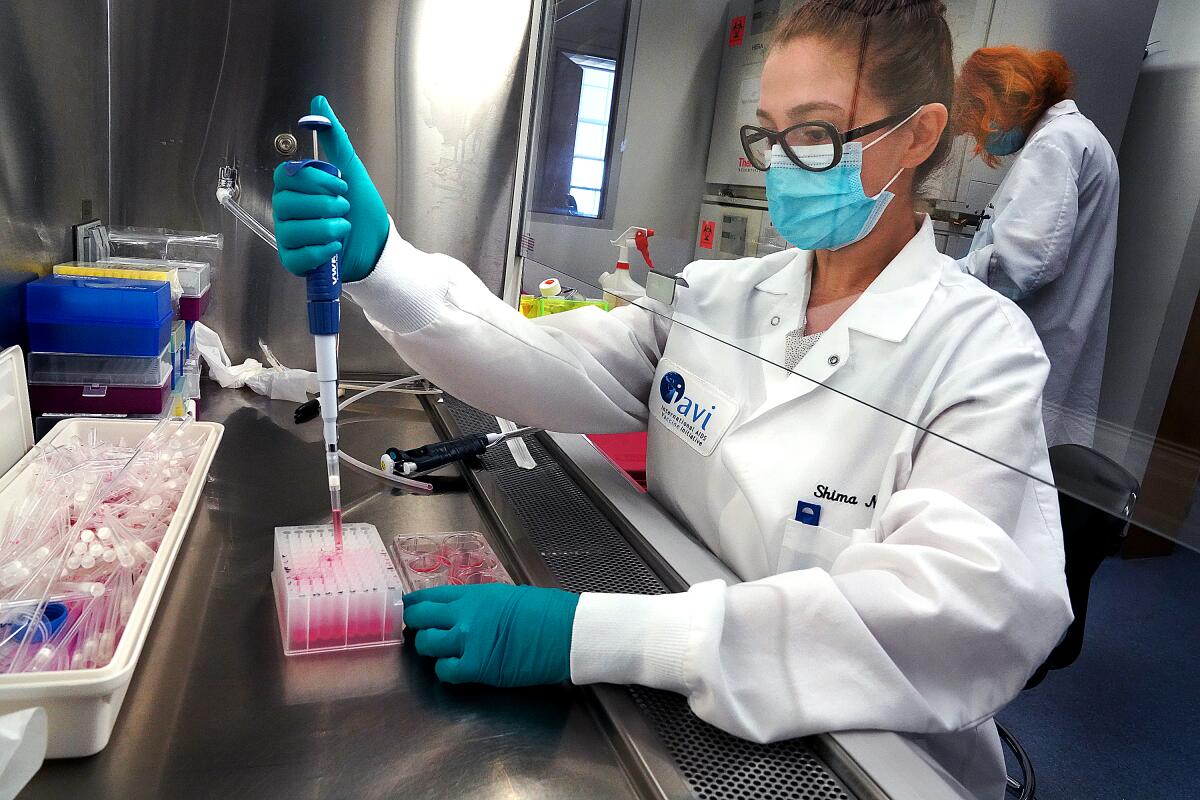
- Share via
With a COVID-19 vaccine drawing closer, public health officials across the country are gearing up for the biggest vaccination effort in U.S. history — a monumental undertaking that must distribute hundreds of millions of doses, prioritize who’s first in line and ensure that people who get the initial shot return for the necessary second one.
The push could begin as early as next month, when federal officials say the first vaccine may be authorized for emergency use and immediately deployed to high-risk groups, such as healthcare workers.
“The cavalry is coming,” Dr. Anthony Fauci, the nation’s top infectious-disease expert, said Thursday on ABC’s “Good Morning America.” He said he hopes shots will be available to all Americans in April, May and June.
Pfizer also boosted hopes this week, saying that early data suggest its vaccine is 90% effective. But the good news came in one of the grimmest weeks of the pandemic so far. Deaths, hospitalizations and new infections are surging across the U.S. — and turning up the pressure to get the vaccine effort right.
In Philadelphia, the health department is counting how many healthcare workers and others would be among the first in line. In Louisiana, officials are planning a remote exercise this week to play out different scenarios exploring how the process might unfold.
“If you get 10,000 doses, what are you going to do, versus 100,000 doses?” said Dr. Frank Welch, director of Louisiana’s immunization program.
Lots more needs to be known about the Pfizer vaccine before COVID-19 is beaten.
State and local officials are also planning for the likelihood that the first shipments will not be enough to cover everyone even in the high-priority groups.
Similar preparations are happening at the federal level. Welch listened in last week on a “war-gaming” session by the U.S. Department of Health and Human Services.
For the vaccination effort to get off the ground, state officials have been readying systems to track supplies and who has been vaccinated. That information will be fed into a national network and will be critical in giving federal health officials an up-to-date picture of vaccinations around the country.
Providers such as pharmacies and doctors’ offices will also need to be able to look up records so that people do not have to return to the same place for their second shot. More than one vaccine could also become available, and doses cannot be mixed and matched.
“We not only have to bring people back for a second dose, but need to make sure that we have very good records of which vaccine they received the first time,” said Dr. Jinlene Chan of Maryland’s health department.
States already have immunization registries, which will be used for COVID-19.
Federal agencies sketch out plans for a coronavirus vaccination campaign to begin gradually in January or possibly later this year.
To better understand whether at-risk groups are getting vaccinated, the Centers for Disease Control and Prevention wanted providers to report the race and ethnicity of the people they vaccinate. But pharmacies and other providers that do not always collect that information objected.
“We have to be careful not to put too many administrative burdens on providers that are already stressed,” said Mitchel Rothholz of the American Pharmacists Assn., an industry group.
He said providers have been told they will have the option to leave that information out.
Providers will also have to report vaccination information daily, which will be an adjustment for those that typically enter data weekly or every couple of weeks, state officials said.
To help people find doses in their area, the CDC wants to put information on a vaccine-finder website, which will be updated each day with the latest inventory.
Supplying that inventory information might be a staffing strain for some providers, including a hospital in Utah that said it has only one person who currently enters the information, said Jon Reid, who manages the state’s immunization registry.
“And they don’t do it every day. They do it whenever,” Reid said. State officials in Utah plan to update the inventory, rather than ask each provider to enter it, he said.
Preliminary data showing a COVID vaccine developed by Pfizer and BioNTech is 90% effective is hopeful news. But there’s a long way to go before this or any of the other promising vaccine candidates are ready for use and available.
States are also working to expand the number of pharmacies, doctors’ offices and other providers that can administer COVID-19 vaccines, to ensure that shots are conveniently available.
But enrollment can be time-consuming, Reid said, because providers often need help filling out forms, getting technical systems working and going through inspections to ensure they can meet storage requirements. The Pfizer vaccine needs to be kept at minus 70 degrees.
Given the hurdles, Reid does not expect smaller pharmacies to become COVID-19 vaccine providers.
Because of the likely need for two doses given three or four weeks apart, the CDC is considering ways of helping Americans remember to get the second shot, including issuing cards that people would get with their first shot, akin to the polio immunization cards many older Americans remember carrying.
But many people will likely need additional prodding. One community health center in a rural part of South Carolina is planning multiple reminders, including text messages and calls from healthcare workers.
Still, “there will still be some that slip through the cracks,” said Ann Lewis, CEO of CareSouth Carolina, which runs the health centers.
Father and daughter partook in a vaccine trial at Kaiser hospital. On Monday, Pfizer announced its success
Distributing doses is another issue. The Pfizer vaccine, which could be the first to get the green light, comes in shipments of nearly 1,000 doses.
“A minimum of 1,000 doses makes it very difficult to get smaller facilities” on board, said Rich Lakin, director of Utah’s immunization program.
Shipments might go to a hospital that is easily accessible to healthcare workers from multiple sites, Lakin said, adding: “They may have to drive to that hospital to get the vaccine.”
In North Dakota, providers receiving fewer than 1,000 doses will have them shipped to a state warehouse that can maintain the ultra-cold storage.
“We’ll break them down into the smaller quantities and then drive them to the provider,” said Molly Howell, the state’s immunization director.
Even if distribution goes smoothly, officials worry that some people will not want the shots.
“If there’s going to be any real challenge, to be honest with you, it’s going to be convincing folks to get the vaccine,” said Patrick Peer, who runs the Good Neighbor Community Health Center in Columbus, Neb.
There is a growing number of “vaccine hesitant” Americans who have not previously identified with the anti-vaxxer movement. Polls show that as the coronavirus pandemic has continued, citizens have become less confident about the safety of a vaccine.
So far, states have received far less money than they say they need for vaccine distribution, and it’s unclear if any more federal help is coming. Public health groups estimate that an additional $8.4 billion is needed to pay for staff, data systems, and outreach and supply costs.
In rural Minnesota this fall, masked nurses in traffic vests reached into cars to give passengers flu shots. The drive-thru clinic in Carlton County was a way to social distance in the pandemic, but it also served as a test run for administering a COVID-19 vaccine.
Carlton County has purchased mobile vaccination stations to prepare for similar mass clinics for the coronavirus. But county health officials are also suddenly dealing with a surge in COVID-19 cases, and many questions remain unanswered, including when a vaccine might arrive and how many doses there will be.
“It’s all kind of up in the air,” said Jenny Barta, a public health nurse specialist.
More to Read
Sign up for Essential California
The most important California stories and recommendations in your inbox every morning.
You may occasionally receive promotional content from the Los Angeles Times.
